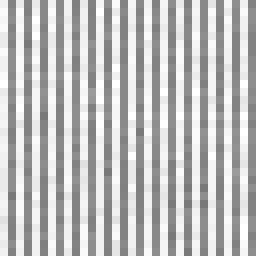NEAR MSI Dark Current and Even/Odd Correction
Contents
Introduction
In a perfect world, all of the observed signal in an MSI image would
be attributable to energy from photons striking the detector.
Unfortunately, some of the observed signal comes from other sources
and must therefore be removed.
The first source of this additional signal is known as dark current
and is a result of signal accumulation on the detector from thermal
conditions. The dark current of the MSI was analyzed by acquiring
many images during piecepart and
full instrument testing without any
illumination. Any observed signal in these images above the fixed
floor offset of the instrument is attributable to the dark current.
Since this signal is typically not interesting when doing photometric
analysis of the images, the dark current must be subtracted prior to
performing the other calibration steps.
Even/Odd Pixel Variation
There is another problem inherent in all of the MSI images that
should also logically be removed at the same time as the dark current.
This problem is a variation of DN values between all of the even
pixels and all of the odd pixels on the order of 5 DN. Figure 1 shows a heavily magnified and contrast
enhanced portion of an MSI image that clearly shows the even/odd
variation.
Figure 1

Because this variation is independent of signal, its effect is
included in all of the dark current images. Since the proper handling
of this variation is to subtract it from the original images, then
subtracting the raw dark current images from signal images will also
remove the even/odd variation in a single step.
Correction Algorithm
Since an exact numerical formula for dark current and even/odd
variation will never be known, the approach that was selected uses
existing dark current images taken at various exposure times and
temperatures to generate representative images of the dark current
that are subtracted from the signal image.
Mark Robinson has devised this plan based on linear behavior of the
dark current as a function of both exposure and temperature. His IDL
script dc_interp.pro takes a list of
dark current images acquired at the same temperature as the original
image and computes an average dark current image for the exposure time
of the original image as a linearly interpolation of the input dark
images.
Because the current number of dark current images that are available
for each temperature and exposure condition are somewhat limited,
a single average value is computed for all of the odd pixels on a
line, and a single average value is computed for all of the even
pixels on a line. These two numbers are subtracted from the even and
odd pixels respectively of the original image. This process is
repeated for each line of the image.
If a large sampling of dark current images are acquired during cruise
at a variety of temperature and exposure conditions, a set of pixel by
pixel average images could be computed for performing the dark current
and even/odd removal.
